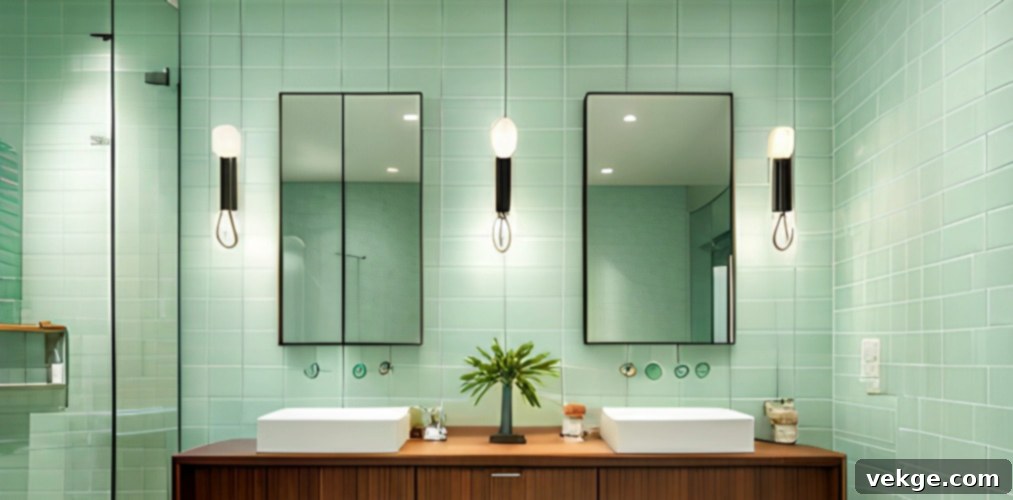The Ultimate Guide to Half Baths: Unveiling Powder Room Potential and Inspiring Designs
For centuries, bathrooms have transcended their basic functional purpose, evolving into essential spaces for personal care, relaxation, and rejuvenation. A long, hot shower after a demanding day or a luxurious soak in a bathtub is often the perfect antidote to stress, a moment to refresh and recharge both body and mind.
In contemporary architecture and interior design, this evolution continues. Homeowners increasingly view bathrooms not just as necessities but as opportunities to infuse style, elegance, and unique accents into their living spaces. From elaborate master ensuites to compact, cleverly designed powder rooms, each bathroom type plays a vital role in a home’s overall aesthetic and functionality.
However, many people are familiar with different bathroom configurations without fully understanding the distinctions. Beyond the grand full bath, there are several key classifications that define these crucial areas. This article delves into one particularly popular and versatile type: the half-bath. We’ll explore its definition, uncover its numerous advantages and potential drawbacks, discuss its value, and present a collection of breathtaking design ideas that can transform even the smallest space into a statement of style.
Are you eager to explore more inspiring bathroom concepts? Dive into this detailed guide to an English Cottage Bathroom for a wealth of charming ideas!
What Exactly is a Half-Bath (or Powder Room)?
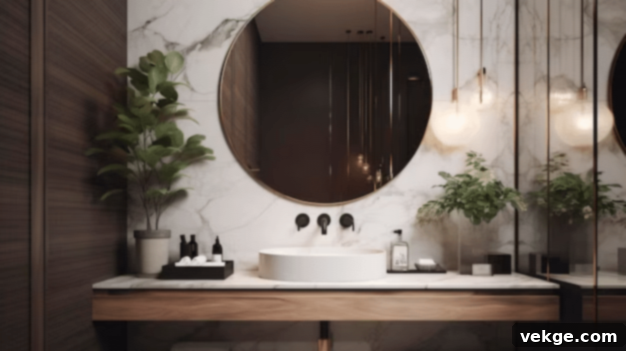
In the world of real estate and home design, bathrooms are typically categorized by the number of essential fixtures they contain. The four primary types include:
- Full Bathroom: This is the most complete setup, featuring all four main elements: a toilet, a sink, a shower, and a bathtub (often a shower/tub combination).
- Three-Quarter Bathroom: As the name suggests, this bathroom contains three of the four standard elements. Most commonly, it includes a toilet, a sink, and a shower, omitting the bathtub.
- Half-Bath (or Powder Room): This is the focus of our discussion. A half-bath contains only two of the four primary elements. By far the most common configuration is a toilet and a sink, which is why it’s also frequently called a “powder room.”
- One-Quarter Bath: The most minimal type, featuring only one of the four elements, usually a toilet or a shower. These are less common in residential settings.
Therefore, a half-bath is defined by its inclusion of just two essential fixtures. While the classic combination of a toilet and a sink is prevalent and highly functional, it’s worth noting that any two elements constitute a half-bath. For instance, a space with a shower and a toilet, or a sink and a bathtub (though less practical as a standalone “bathroom”), would technically fit the definition. However, the toilet-and-sink pairing has become the industry standard for a reason – it meets the most common guest needs without occupying excessive space.
These compact bathrooms serve numerous practical purposes. They are ideal as guest bathrooms, providing visitors with a convenient and private space without needing to access personal full bathrooms. They also significantly alleviate the morning rush in multi-person households, offering an additional toilet and sink that can dramatically reduce traffic around a single full bathroom. Historically, half-baths have graced homes for over a century, known for their elegance and utility as powder rooms. When considering home renovations, construction, or even property sales, understanding these classifications is crucial as they directly impact a home’s value and appeal.
Pros & Cons of Installing a Half Bath
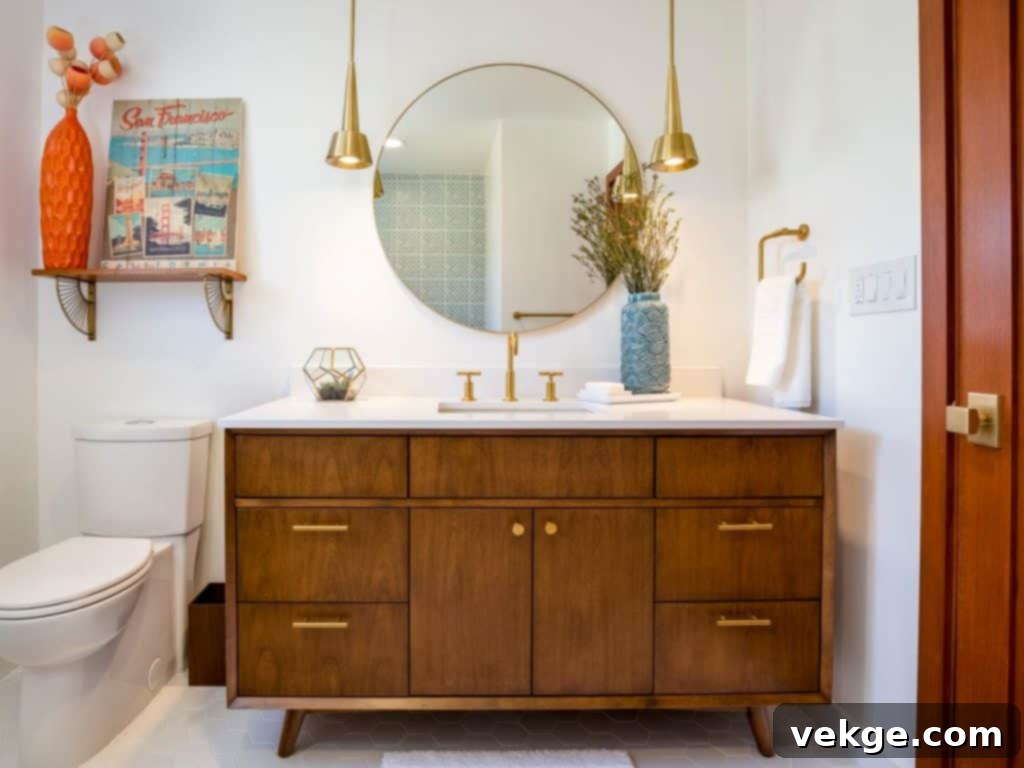
Deciding whether a half-bath is a valuable addition to your home requires careful consideration of its benefits and drawbacks. While the advantages often outweigh the disadvantages for many homeowners, understanding both sides will help you make an informed decision tailored to your specific needs.
Advantages of a Half Bath
Here are the compelling reasons why adding a half-bath could be one of the best home improvement decisions you make:
- Optimized for Small Spaces: Half-baths are incredibly space-efficient. They require significantly less square footage than a full bathroom, making them perfect for homes with small or compact layouts. You can often tuck a powder room under a staircase, into a large closet, or within an unused corner of a hallway, maximizing the utility of every inch.
- Enhanced Guest Convenience and Privacy: Offering a dedicated half-bath for guests is a thoughtful gesture that enhances their comfort and maintains the privacy of your personal bathrooms. Visitors don’t need to wander through private living areas or bedrooms to find a restroom, creating a more elegant and comfortable hosting experience.
- Simplified Maintenance: With only two fixtures (a toilet and a sink), cleaning a half-bath is remarkably quicker and easier compared to a full bathroom. Less surface area, fewer elements to scrub, and no shower or tub grime mean upkeep is a breeze, saving you time and effort.
- Boosts Property Value and Appeal: Adding a half-bath is a smart investment that can significantly increase your home’s resale value. Potential buyers often see an additional bathroom, even a small one, as a major advantage, especially in homes with only one full bath. It signals convenience and thoughtful design, making your property more attractive in a competitive market.
- Reduces Household Traffic: For families or homes with multiple occupants, a half-bath can drastically alleviate congestion around the main bathroom, particularly during peak times like mornings. It provides an extra facility for quick needs, making daily routines smoother and less stressful for everyone.
- Flexibility for Future Expansion: Should your needs change over time, a half-bath can often be conveniently modified or expanded into a three-quarter or even a full bathroom, provided the plumbing access and structural space are available. This adaptability offers long-term flexibility for your home.
Disadvantages of a Half-Bath
While the benefits are clear, there are a few considerations that might make you pause before installing a half-bath:
- Limited Features: The most obvious drawback is the absence of showering and bathing facilities. A half-bath is strictly for quick needs and handwashing. If your primary need is an additional shower or bathtub, a half-bath won’t fulfill that requirement.
- Lower Utility for Specific Households: For individuals living alone who already have a full bath, or households that rarely host guests, the practical utility of a half-bath might be minimal. In such cases, the space and cost investment might not provide enough return on convenience.
- Initial Installation Cost: While generally less expensive than a full bathroom, installing a new half-bath still represents a significant investment. Costs can escalate if new plumbing lines need to be run or if structural modifications are required, making it a decision that needs careful budget planning.
- Space Requirements (Even if Small): Although it’s ideal for small spaces, you still need *some* available square footage. If your home is truly tiny with no spare nooks or corners, even a half-bath might be an impossible squeeze.
Verdict: Should You Install a Half Bath?
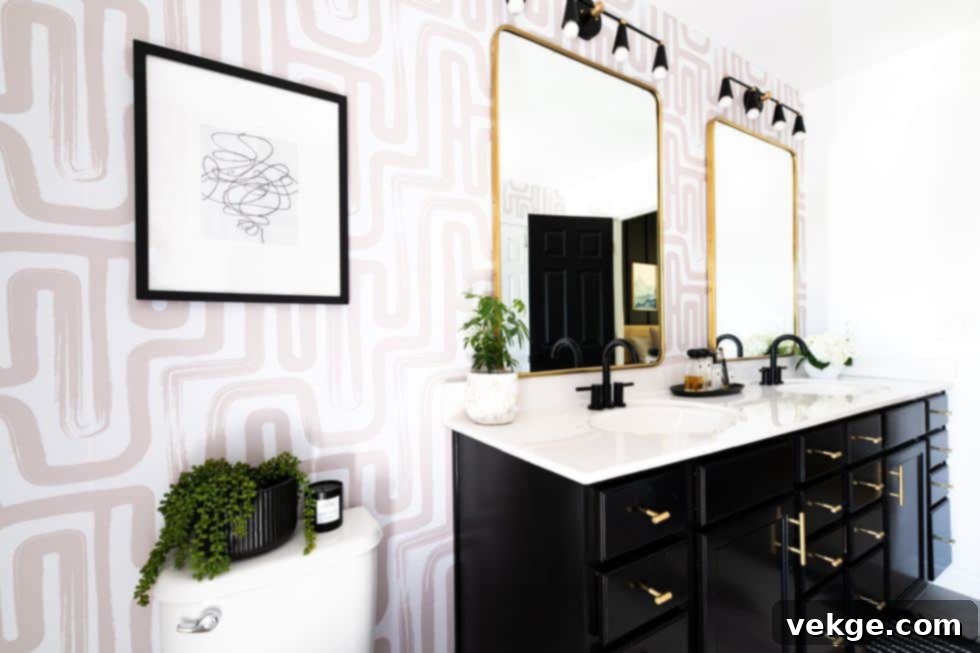
The cost of adding a half-bath can vary widely, typically ranging from $5,000 to $15,000, depending on factors such as location, the quality of fixtures, and whether existing plumbing can be utilized. For a complete build from scratch, including new foundation work or significant structural changes, expenses could potentially climb to $30,000 or more. However, when considering the return on investment, a half-bath is often seen as one of the most cost-effective home improvements for boosting property value.
Ultimately, the decision to install a half-bath hinges on your specific household needs, lifestyle, and budget. If you’re a busy household of four with only one full bathroom, a strategically placed half-bath can dramatically improve daily routines, making mornings less hectic and offering much-needed convenience. It serves as an invaluable overflow facility, especially when entertaining guests.
While a half-bath offers reduced utility compared to a full bathroom—lacking a shower or tub—its value in terms of guest privacy, easing household congestion, and increasing home marketability is undeniable. For many, the added convenience and enhanced flow of the home make it a highly worthwhile investment. Consider your current living situation, your future plans, and how an additional, albeit smaller, bathroom could positively impact your daily life.
Inspiring Half-Bath Design Ideas: Maximizing Style in Small Spaces
The compact nature of a half-bath or powder room presents a fantastic opportunity for bold and creative interior design. Since these spaces are typically used for shorter periods by guests or family members, you can experiment with daring colors, unique textures, and striking decorative elements without overwhelming the entire home. Think of it as a jewel box where you can truly let your imagination soar. Here are some of the best and loveliest ideas to elevate your half-bath’s interior:
1. Embrace the Elegance of a Floating Sink
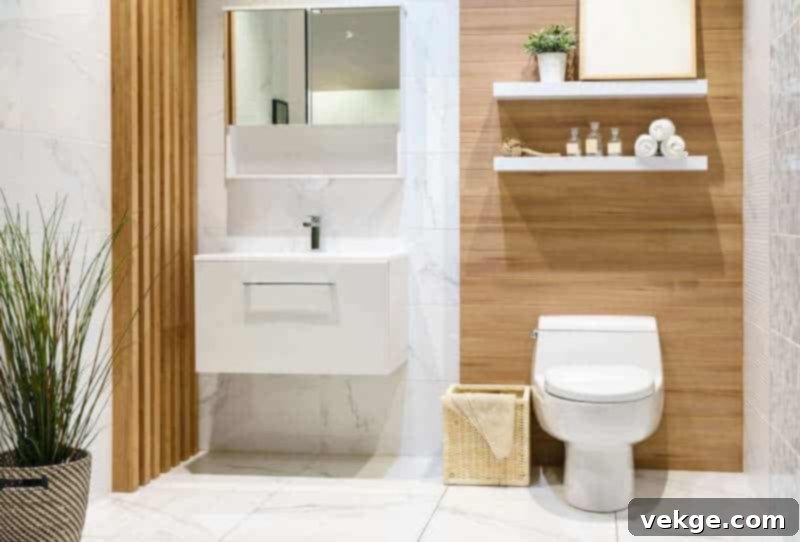
In a space where every inch counts, a floating sink or vanity is a game-changer. By mounting the sink directly to the wall, you free up valuable floor space beneath, creating an illusion of openness and making the room feel larger and less cluttered. This design choice instantly lends a sleek, modern, and regal touch to the interiors. Opt for minimalist designs in materials like ceramic, concrete, or stone, and consider adding under-sink lighting for an extra touch of sophistication. The exposed floor also makes cleaning much easier, adding practicality to its aesthetic appeal.
2. Incorporate Greenery with Plants

Bringing nature indoors can instantly refresh any space, and a half-bath is no exception. While large potted plants might not fit, even small additions can make a significant impact. Consider adding a delicate trailing vine like Pothos or Philodendron on a shelf, a charming succulent arrangement by the sink, or a small, humidity-loving fern. Plants introduce an earthy, organic touch, vibrant color, and interesting textures that contrast beautifully with minimalist fixtures. They also contribute to a sense of calm and can even help purify the air, transforming the small space into a serene oasis.
3. Add Bold Colors & Statement Wallpapers
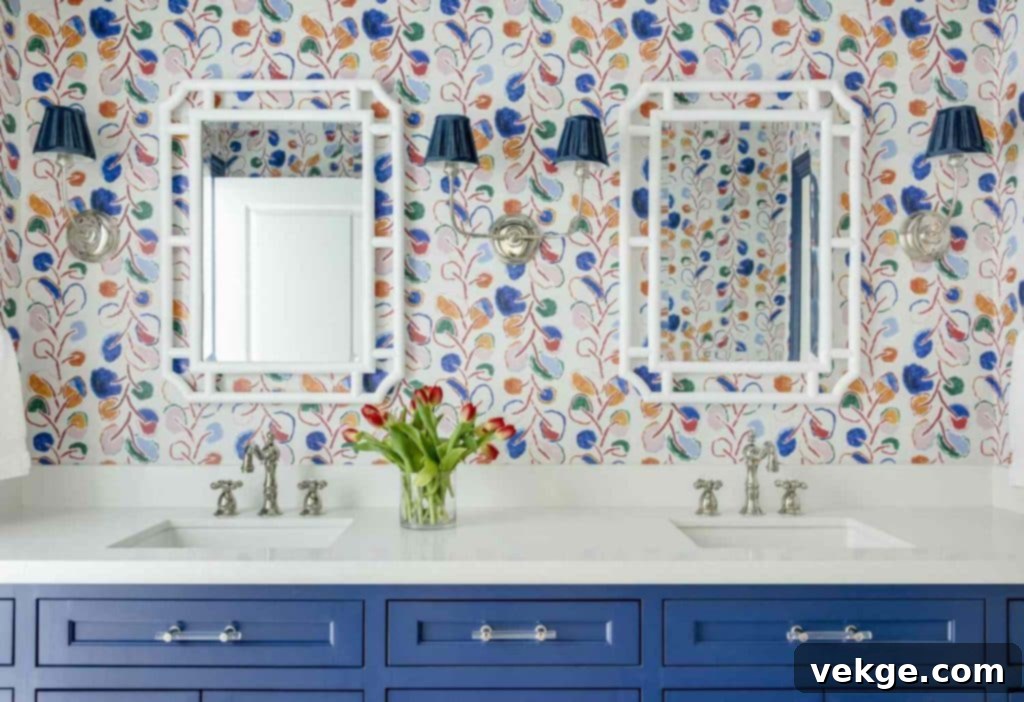
A half-bath is the perfect canvas for making a dramatic statement. Unlike larger rooms where bold patterns might overwhelm, a small powder room can handle audacious choices. Stunning wallpapers with intricate patterns, vibrant florals, geometric designs, or even playful murals can add incredible personality and a sense of awe. Similarly, using a deep, rich paint color on all walls – like a charcoal gray, navy blue, emerald green, or a jewel-toned purple – can create an incredibly luxurious and intimate atmosphere. Consider pairing these bold wall treatments with a uniquely colored sink or faucet for a truly unforgettable surprise for your guests.
4. Embrace a Cohesive Theme

Designing with a specific theme in mind ensures a cohesive and polished look, far superior to randomly adding decor. A well-executed theme transforms the space, creating a narrative and a distinct mood. Consider themes such as:
- Coastal or Nautical: Incorporate elements like shiplap walls, blue and white color palettes, seashell decor, or rope accents for a fresh, breezy feel.
- Vintage or Retro: Look for antique-style mirrors, clawfoot sink legs, classic black and white tiles, or vintage-inspired lighting fixtures.
- Bohemian (Boho): Think natural textures like rattan or macrame, earthy tones, patterned tiles, and lush greenery.
- Modern Minimalist: Clean lines, monochromatic colors, hidden storage, and sculptural fixtures create a serene, uncluttered aesthetic.
- Art Deco: Embrace geometric patterns, metallic accents (gold, brass), luxurious materials, and bold, symmetrical designs.
- Farmhouse: Opt for distressed wood, industrial-style lighting, a trough-style sink, and rustic decor.
The key is to select a theme and carry it through all elements: paint colors, wallpaper, fixtures, mirrors, lighting, and small decorative touches.
5. Optimize with Smart Storage Solutions
Even though it’s a small space, a half-bath still benefits from smart storage. Keep it tidy and functional by incorporating clever solutions. Consider recessed shelving built into the wall, a small vanity with drawers or a cabinet underneath (even a shallow one), or floating shelves above the toilet. Stylish baskets can hold extra toilet paper or hand towels, adding to the decor while serving a practical purpose. Maximizing storage prevents clutter and maintains the room’s pristine appearance.
6. Elevate with Strategic Lighting
Lighting can dramatically impact the perception of space and ambiance. In a half-bath, ditch the single overhead light. Instead, consider a combination of fixtures. Sconces placed on either side of the mirror provide flattering, shadow-free illumination. A decorative overhead fixture, like a mini chandelier or a unique pendant light, can serve as a focal point. Installing a dimmer switch allows you to adjust the mood, from bright and functional to soft and inviting.
7. Make a Statement with Mirrors
A mirror is essential in any bathroom, but in a half-bath, it can be a powerful design tool. Beyond its function, a large or uniquely framed mirror can make the space feel significantly bigger by reflecting light and creating depth. Experiment with an oversized mirror that nearly spans the wall, a mirror with an ornate, vintage frame, or a modern, backlit mirror. The mirror can become a piece of art that defines the room’s style.
Final Thoughts
Generally, our recommendation for integrating a half-bath into your home is a resounding affirmative. These often-underestimated spaces offer tremendous utility for families and individuals alike, proving to be a highly cost-effective addition that significantly enhances daily living without incurring the high expenses associated with a full bathroom renovation.
It’s crucial to remember a key distinction in real estate: two half-baths do not equate to a full bathroom. When reviewing property listings, you might encounter descriptions mentioning “two half-baths.” This typically means two separate powder rooms, each with a toilet and a sink, situated in different areas of the house, rather than a single full bathroom. While both offer convenience, their functionality differs.
If you believe a half-bath could bring added convenience, boost your home’s functionality, and potentially increase its market value, don’t hesitate to explore this option. It’s an investment in comfort and practicality that often pays dividends. How would you decorate and personalize your ideal half-bath?
Let us know your creative ideas in the comments section below!
